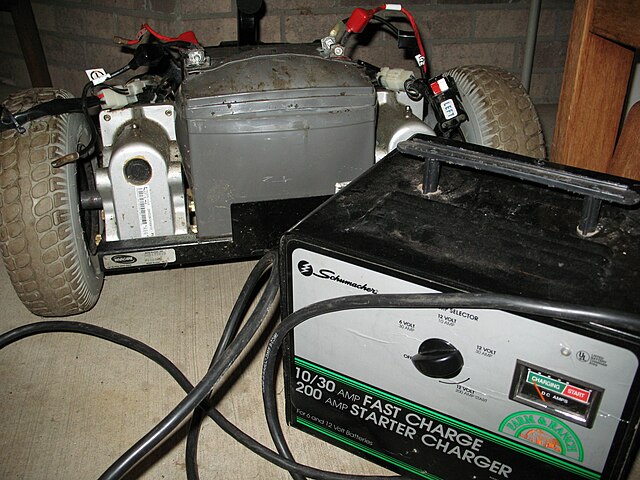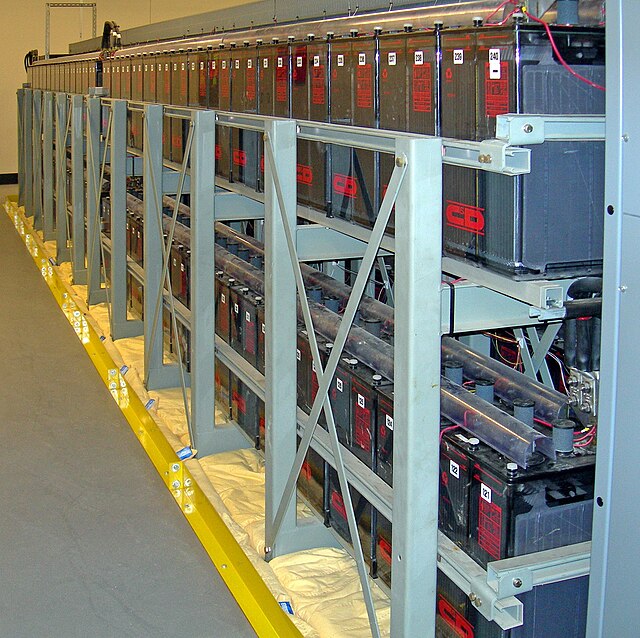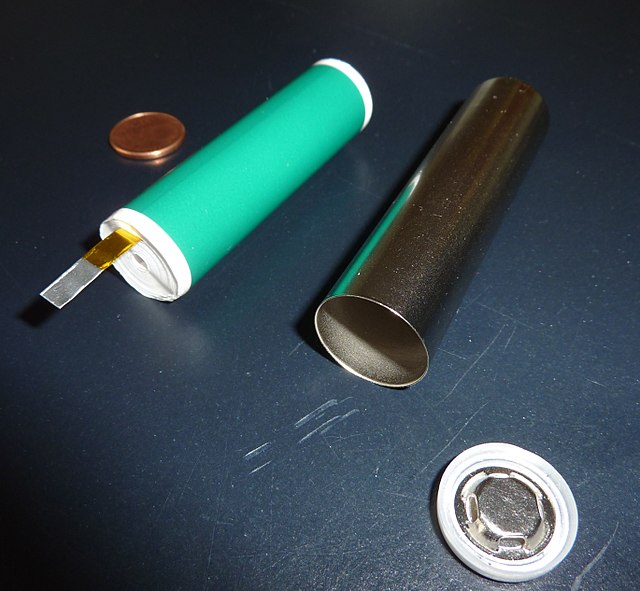The lead–acid battery is a type of rechargeable battery first invented in 1859 by French physicist Gaston Planté. It is the first type of rechargeable battery ever created. Compared to modern rechargeable batteries, lead–acid batteries have relatively low energy density. Despite this, they are able to supply high surge currents. These features, along with their low cost, make them attractive for use in motor vehicles to provide the high current required by starter motors. Lead–acid batteries suffer from relatively short cycle lifespan and overall lifespan, as well as long charging times.
12-volt lead–acid car battery
Internal view of a small lead-acid battery from an electric-start–equipped motorcycle
Charge current needs to match the ability of the battery to absorb the energy. Using too large a charge current on a small battery can lead to boiling and venting of the electrolyte. In this image a VRLA battery case has ballooned due to the high gas pressure developed during overcharge.
Sulfated plates from a 12-V 5-Ah battery
A rechargeable battery, storage battery, or secondary cell, is a type of electrical battery which can be charged, discharged into a load, and recharged many times, as opposed to a disposable or primary battery, which is supplied fully charged and discarded after use. It is composed of one or more electrochemical cells. The term "accumulator" is used as it accumulates and stores energy through a reversible electrochemical reaction. Rechargeable batteries are produced in many different shapes and sizes, ranging from button cells to megawatt systems connected to stabilize an electrical distribution network. Several different combinations of electrode materials and electrolytes are used, including lead–acid, zinc–air, nickel–cadmium (NiCd), nickel–metal hydride (NiMH), lithium-ion (Li-ion), lithium iron phosphate (LiFePO4), and lithium-ion polymer.
A battery bank used for an uninterruptible power supply in a data center
A rechargeable lithium polymer mobile phone battery
A common consumer battery charger for rechargeable AA and AAA batteries
Cylindrical cell (18650) prior to assembly. Several thousand of them (lithium ion) form the Tesla Model S battery (see Gigafactory).








